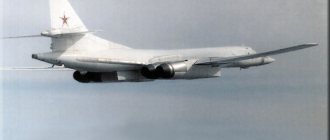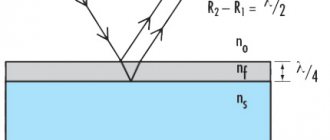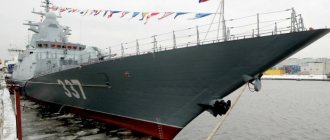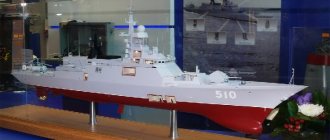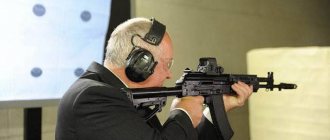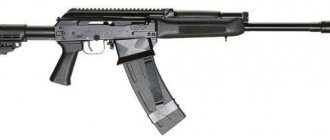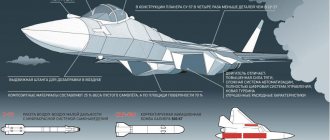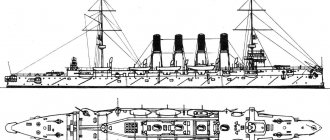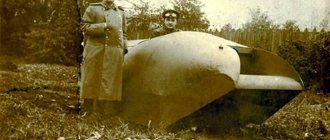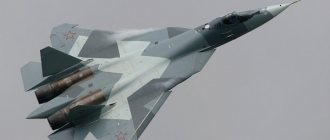Let's open Wikipedia and see what it is. Stealth is a set of methods for reducing the visibility of combat vehicles in radar, infrared and other areas of the detection spectrum through specially designed geometric shapes and the use of radar-absorbing materials and coatings, which significantly reduces the detection radius and thereby increases the survivability of a combat vehicle. Significance reduction technologies are an independent branch of the military scientific discipline of electronic countermeasures and cover a range of equipment and manufacturing technologies for military equipment.
Many people remember the movie X-Men where they had a stealth plane, but I’m disappointed that there is no such stealth option. In this article we will consider only radar signature , its main parameters and how it affects the aircraft as a whole, and most importantly, I will try to do this in simple words, so that even those who are not immersed in this topic can understand it.
In the radar wavelength range, the main parameter that determines the visibility of a device (whether it is a drone, an airplane, a rocket, etc.) is the effective scattering surface (ESR), this parameter is determined by the formula:
Figure 1. Definition of EPR
R – distance from the target to the radar station; Es – reflected electromagnetic wave; Eo – incident electromagnetic wave. It is measured either in m2 or in dB
Figure 2 comparison of indicator by aircraft type
Now let's look at the difference in the EPR values of stealth fighters and huge bombers. The difference in visibility parameters reaches several orders of magnitude.
Now the question should have come to mind: why reduce it? For what? for what, etc...
The answer is very simple, the visibility of an aircraft, or rather the distance at which it can be detected (recognized, selected), directly affects its effectiveness, that is, the higher the combat effectiveness of the aircraft, the fewer aircraft will be needed to complete a particular mission , and this in turn affects the cost. To put it even more simply, with a higher visibility indicator (no, not more responsibility) there will be a higher probability that the radar will detect the aircraft and it will be shot down. This dependence clearly follows from the approximate formula for estimating the detection range.
Now let's move on to something more interesting: how people reduce EPR
Methods for reducing ESR
There are several options to reduce the ESR of an aircraft; their physical meaning is that when the radar station (radar) emits an electromagnetic wave (EMW, wave) and it hits the surface of the aircraft, the wave should not return back to the radar. It is necessary to make sure that the wave is either reflected in the direction opposite to the radar or dissipates. Let's consider several options; they are NOT universal and they directly depend on the conditions in which the aircraft is used. Let's begin.
- Use an inconspicuous form.
- Application of radio-absorbing materials and coatings.
- Radio wave scattering control.
Hidden mode
If we do not want the radar to detect us, then we should not return to it the reflection of the wave that it sends to you. There are several solutions for this:
- Be transparent to waves: the wave passes through you without being reflected;
- Send a wave in a direction different from where it came from: it will not go to the radar;
- Absorb Wave: The wave will not be reflected;
- Send an identical wave but 180° out of phase so that the incident wave and the reflected wave cancel each other out.
Regarding transparency: usually (any) waves are reflected from objects whose size approaches the wavelength of the emitted wave. To detect something big, a long wavelength is enough. To detect a bird or even rain, short waves are needed.
All objects, of any material, can reflect electromagnetic waves, and therefore can become visible on some radars. Needless to say, under these conditions it becomes difficult to create an aircraft that is invisible to all waves: for the enemy it is enough to use a wave that matches the size of the aircraft to be sure that he has an echo radar.
So that leaves three other solutions: deflect the wave, absorb it, or cancel it with another wave. Many of these methods are usually used simultaneously.
Even now, stealth aircraft have a very unique geometry. This geometry is there precisely to reflect the wave somewhere other than where it originated from. In some cases, the radar wave also hits the aircraft's angular protrusions and the cabin ends up dissipating the energy entirely:
Stealth aircraft are coated with a coating (usually paint itself) that absorbs radio waves. This coating is designed to absorb a wide range of frequencies, making the aircraft undetectable to many different radars.
This coating can then absorb the wave chemically or physically.
In the first case, the wave turns into heat because it reacts with metallic inclusions in the paint. Metals, and especially metals with high electrical permeability or magnetic permeability (for example, Permalloy or Mu metal) absorb electromagnetic waves very well.
In the second case, the wave is suppressed by the interference effect of the thin film due to the thickness of the coating. In the latter case, the received wave is reflected 50% by the cover and 50% reflected by the cabin below, ideally with a half-phase phase shift wavelength: the two reflected waves therefore cancel each other out. The downside is that this only works well for one specific wavelength.
In addition to these passive methods, there are also active wave jammers. This means that the aircraft will either emit its own waves, or cancel the waves it receives by emitting waves offset by 180°, which will then cancel the radar wave.
Here the aircraft has a sensor that detects the nature of the incident radar signal and then produces a signal that cancels it.
Finally, some aircraft can release anti-radar decoys, a bit like heat decoys, but for radars and missiles controlled by a radar signal. The radars then detect thousands of different signatures and no longer know which one is the real plane.
Discreet shape
To put it very briefly, here it is
Figure 3. B-2
Let's consider the main parameters of an inconspicuous form. They are determined by the following:
The visibility of an aircraft depends on the aerodynamic design; when choosing the appearance of an unobtrusive aircraft, it is necessary to focus on its reflective shapes. The RCS values of various aircraft depending on the type (shape) of the airframe (Fig. 2) shows that the optimal aerodynamic design of an aircraft with a low RCS is a flying wing.
The sharp edges of an aircraft's aerodynamic surfaces are ribs on which incident rays are diffracted. In this regard, in the layout of stealth aircraft the number of directions along which the reflective edges of the aerodynamic surfaces are oriented should be minimized. All aerodynamic surfaces have the same sweep (Fig. 4)
Figure 4. Parallelism of edges
At the same time, it is necessary that the aircraft body is shaped by flat surfaces oriented in such a way that the reflection from them does not coincide with the location direction (Fig. 5);
Figure 5. a) Form F-117 b) Form B-2
The EPR strongly depends on the layout of the aircraft and, in particular, on the internal shape of the air intake ducts, nozzles, cockpit, antenna compartments of various onboard radars (this is a separate hemorrhoid), and the presence or absence of suspended weapons. The most significant contribution to the EPR of an aircraft is made by the engine air intake. To reduce its ESR, the air intake is made S-shaped and placed on top of the aircraft body (this solution is mainly used in drones)
Figure 6 S-shaped air intake
As for the on-board antenna, that’s a separate story. I don’t want to touch on this issue.
Radar
Radar, in the aviation sense, is a device that can detect what is within its detection field using radio waves. The term "Radar" comes from the acronym for RAdio Detection And Ranging, which means "detecting and estimating distance by radio waves."
Just as a camera with flash can pick up light reflected from objects, radar uses radio waves in the same way.
First, the radar will emit an electromagnetic wave towards the sky (in case we want to detect airplanes). This wave will spread, hit the aircraft and be reflected by the aircraft. If part of this reflection, called a radar echo, passes through the radar antenna, the latter detects the aircraft and can display information on the screen:
Not all planes are the same size, so each plane template has a wave signature that is unique to it. Thus, with the help of radar, you can find out whether you are dealing with an airliner, a small glider or a fighter jet. By analyzing the time it takes for the reflected wave to return to the radar, you can find out how far away the plane is. By repeating the operation, you can find out its direction and speed.
Radar-absorbing materials and coatings (RPP/RPM)
RPMs represent a class of materials used in visibility reduction technology to camouflage weapons and military equipment from detection by enemy radar. They are an integral part of the general direction associated with the development of means and methods for reducing the unmasking signs of weapons and military equipment in the main physical fields. When electromagnetic radiation interacts with the RPM, simultaneous processes of absorption, scattering (due to the structural and geometric heterogeneity of the material) and interference of radio waves occur.
The distinction between the materials themselves (RPM) and coatings (RPP) is to some extent arbitrary and assumes that the former are part of the structure of the object, and the latter, as a rule, are applied to its surface. The conditionality of the division is also related to the fact that any radio-absorbing material is not only a material, but a microwave absorber device. The ability of a material to absorb high-frequency radiation depends on its composition and structure. RPM and RPP do not provide absorption of radiation of any frequency; on the contrary, a material of a certain composition is characterized by better absorption capacity at certain frequencies. There is no universal absorbing material adapted to absorb radiation from a radar station over the entire frequency range.
There is a common misconception that, as a result of using RPM, an object becomes invisible to locators. In fact, the use of radio-absorbing materials can only significantly reduce the effective scattering surface of an object in a specific radar frequency range, which, however, does not ensure complete “invisibility” of the object at other radiation frequencies. RPM are only a component of ensuring low visibility of the object.
The main places of application of the RPP (RPM) are the air intake; antennas and antenna radomes; external suspensions; fuselage; places where the fuselage meets the tail unit; keel; corner reflectors; wing; plumage.
It seems to be a universal thing, but at high speeds, in other words, with intense aerodynamic heating, the RPP (RPM) will not withstand therefore this solution is not suitable for all types of devices.
Russian aviation at a glance
The use of Stealth technology (from the English Stealth - secret, secretive) is one of the most noticeable trends in the design and creation of new combat aircraft in recent years. However, its use forces designers to make compromises that negatively affect the flight characteristics and weight of the aircraft’s combat load.
Now it is possible to design an aircraft in such a way that it is as invisible as possible to radar in a certain wavelength range. This can be done by selecting specially designed materials and choosing the appropriate shape of the aircraft airframe. The main purpose of all this is to dissipate most of the radiation and energy, except towards the radar receiver, and absorb the rest.
Foreign samples of Stealth
The first stealth aircraft designed using Stealth technology and adopted by the US Air Force was the Lockheed F-117 A. It first flew on June 18, 1981 at a test site in Nevada, under conditions of maximum secrecy.
It was quite close in size to a fighter, but looked quite unusual for that time. The characteristic features of this aircraft were: a wing with a large sweep along the leading edge, the absence of horizontal tail and inclined fins, the control surfaces of which combined the functions of the direction and elevator rudders. The General Electric F 404 engines did not have afterburners and were deeply hidden in the wing roots.
The F-117 A was not a fighter, it was a full-fledged attack aircraft, like the A-12 Avenger 2, which was created for the US Navy, but was not accepted into service for a number of reasons.
The next stealth aircraft to enter service was the B-2A bomber, but by that time testing of new fighters built using Stealth technology was already in full swing. As part of the ATF program, the US Air Force chose between the Lockheed YF-22 and Northrop YF-23 aircraft. Two fighter prototypes were built, one powered by Pratt & Whitney engines and the other by General Electric YF 120.
On April 23, 1991, following the results of this competition, the winner was announced, it was the YF-22 with YF 119 engines. Today this aircraft, noticeably different from its prototype, is known as the F-22 Raptor, adopted by the US Air Force and built in series.
F-22 Raptor
Equipped with F 199 engines, 155.70 kN thrust and thrust vectoring, the F-22 has a wing area of 78 sq.m. The aircraft is equipped with conventional controls, including ailerons, horizontal tail surfaces, rudders, slats and flaperons. The engine compressors are hidden by curved air intake ducts, and air-to-air missiles and other types of ammunition are hidden in the internal airframe compartments.
The next generation of aircraft was created under the JSF program. After the creation of demonstrator aircraft, at the end of 2001 she became the winner of the competition with her X-35 project, and her competitor was her X-32 model. The production F-35 fighter is equipped with one F 119 turbojet engine, which on the F-35B modification (with short take-off and vertical landing), created specifically for the USMC, also drives the auxiliary lift fan, which is installed behind the cockpit.
But Stealth technology is more widely used in the creation of promising unmanned combat aircraft (UCAV). The absence of a cockpit gives designers a wider field of activity. Work on such aircraft is widely carried out in many countries around the world. The following BBS demonstrators were created in the USA: X-45 (Boeing) and X-47 (Northrop Grumman). In Europe - the Taranis BBS of the BAE Systems concern and the Neuron BBS of the multinational consortium Dassault.
Russian samples
Russia is also not lagging behind in the development of new types of aircraft using Stealth technology. The latest fighters created in the former USSR, the MiG-29 and MiG-27, as well as their modern modifications, developed and produced in Russia, are distinguished by a fairly harmonious combination of all parameters. All of these aircraft were designed with a full understanding of the full capabilities of Stealth technology, a number of which were incorporated into their design. But much more attention was paid to the problems of reducing radar signature when creating new Mig-1.44, Su-47 Berkut aircraft, the development experience of which was used in the development and creation of the newest fighter of the future PAK-50-FA (a promising aviation complex for front-line aviation). This machine has unique properties and surpasses all fighters in many parameters and indicators. It is currently undergoing flight tests.
PAK-50-FA
Disadvantages of Stealth technology
The main indicator of radar signature is that the effective dispersion area can sharply increase by 20-100 times when any doors on an “invisible” aircraft are opened. Accordingly, they have to be specially designed and opened immediately before striking the target and immediately closed upon completion.
Currently, designers in many countries are working to create devices that will reduce all the advantages of “invisible” devices to nothing, and a number of prototypes already exist. For example, new modernized data exchange channels can allow fighters, working in pairs, to implement the principle of a “bipositional radar”, in which the transmitter and receiver are located at a great distance and thereby make it possible to detect weak “invisible” radiation. Today, the design and development of receiver modules based on gallium nitride is underway. Compared to gallium arsenide-based modules used today, they operate with a wider spectrum of radiation, which reduces the entire advantage of radio-absorbing coatings to zero, which perform their function only in a narrow wavelength range.
Well, we’ll see soon what will happen and who will win in this eternal battle between the people who create weapons and the people who create the “antidote.”
Su-37 "Berkut"
Mark of the Ninja
Another project that really stood out from the others is Mark of the Ninja. It cannot be compared either with those games that take place in our time, or with projects that offer a reference to the past, or even with those that throw the character into the future. Here we are talking about a ninja clan, of which your character is the elected representative. You have to save your clan from destruction and avenge your violated honor, but as events unfold, some details will be revealed that will dramatically change your attitude towards what is happening. However, this is not all that is important here - what is more important is that the game is implemented as a platformer, that is, there is no exciting or realistic three-dimensional graphics or super special effects. The project gains fame precisely because of its gameplay, immersion in the world of ninjas, and the abilities of your character. Gradually, you will discover new and new ways of silent killing, you will be able to scare enemies with the bodies of their own comrades, feed the corpses of opponents to beetles so that there are no traces left - in general, you are given a huge space for action, from which you are unlikely to be able to tear yourself away.
Hitman
Another game series that has received recognition is Hitman. She presents a mysterious story about a bald killer with the number 47 on the back of his head. He receives tasks and carries them out unquestioningly, while at the same time trying to understand who he is, where he came from and what his true purpose is. A dark business suit, a bald skull and a guitar string - these symbols of Forty-Seven have become iconic, so if you have not yet played any of the parts of this masterpiece series, then you should definitely improve urgently. This game is especially good for transitioning from standard shooters to stealth, because there is enough open shooting and silent killings. Hitman cannot be called a full-fledged stealth game, this game is rather a symbiosis of stealth and action, and a magnificent symbiosis at that.
One more example
The stealth mode of Skyrim is a fairly decent example (of course, with the exception of shortcomings with artificial intelligence) of stealth in computer games that do not belong to the stealth genre. There are quite a few similar projects that skillfully incorporate stealth mode to increase the versatility of the game. One of the latest masterpieces, GTA 5, also added a stealth mode, which was previously absent in all games in the series. And only here you can act secretly in certain missions, which will be facilitated by such devices as, for example, a silencer. Naturally, the entire gameplay of this project is built on a completely different gameplay, so you should not expect an abundance of stealth from such a game. The stealth mode of GTA-5 is rather the cherry on the cake of this masterpiece, and not one of the key components of the entire gameplay. So now is the time to move on to considering those projects that can be completely attributed to the stealth genre. And which, naturally, received enormous publicity and recognition in the world of computer games.
Cold, warmer, hot...
An aircraft engine not only makes noise, but also gets very hot during operation. This means it emits infrared waves. This was a “headache” back in the era of piston aircraft - hot pipes and hot exhausts from them significantly unmasked the aircraft at night. The jet propulsion system emits even more infrared radiation.
The heat signature is a serious problem because it is targeted by a significant number of modern surface-to-air or air-to-air missiles. There are several ways to counter this threat:
- shielding or changing the shape of nozzles;
- shooting heat traps;
- setting up active interference.
Combat helicopters are equipped with screen-exhaust devices (ESD), in which hot exhaust gases are mixed with cold air. Due to this, the visibility of the engine in the infrared range is reduced. For obvious reasons, such a device cannot be installed on a jet aircraft, and other methods are used here: they shield the nozzle using a housing or make it rectangular. The latter solution negatively affects the efficiency of the engine, but the rectangular jet stream dissipates faster.
The F-22 Raptor's flat nozzles help reduce its visibility in the infrared range
Shooting false thermal targets knocks down the missile's guidance head, forcing it to pursue a more powerful thermal signal. Each of the traps is a pyrotechnic device similar to a signal flare. They are loaded into special release devices and fired automatically.
Active jamming is carried out using generators or on-board laser stations. The former are infrared lamps with reflectors, and the latter are equipped with systems for searching for attacking missiles and an IR laser that blinds their seeker.
We can also add that reducing thermal radiation is relevant not only for airplanes or helicopters. Third-generation ATGMs like the American Javelin also have an infrared homing head, so tank builders will also have to think carefully about reducing the thermal footprint of the engine.
More details about stealth
Many gamers who have not encountered this mode or games of a similar genre may not quite understand what the essence of this phenomenon is. Therefore, it is worth describing in more detail what stealth is, how to use it and what it gives. Stealth mode is the state of the game character when he can move silently and equally silently eliminate opponents. Most often, the character, at the moment of activating this mode, slows down, bends down and does everything so that he cannot be noticed. Murders in this mode are also carried out without anyone seeing them. In most cases, you are also given the opportunity to hide the body of a defeated enemy so that no one discovers him and raises the alarm. Almost always in games of the stealth genre, as well as in stealth missions of games of another genre, a raised alarm means at least the loss of game points, but a much more common option is that you fail the task completely if you or the traces of your actions, that is, are not hidden corpses, the enemy discovered. As you can see, stealth mode is a very exciting journey into an unusual world. And it differs significantly from what is offered to you in other genres.
Examples NOT in the action genre[edit]
- Invisible, Inc.
- This War of Mine
- “Hammer and Sickle” is nominally a turn-based strategy game, like the entire Silent Storm series. In reality, it’s more of a quest. And the very first combat mission is a real stealth mission: you need to cross the border unnoticed. Border guards are invulnerable, shoot accurately, kill with one shot and call others for help, so detection is tantamount to losing. And in subsequent missions and battles, it is advisable to avoid burning, due to the considerable complexity of the game.
- Commandos: Behind Enemy Lines
- Sheep, Dog 'n' Wolf: A puzzle platformer where each level features a shepherd dog that the coyote hero must keep out of sight.
- Shadow Tactics: Blades of the Shogun is a tactical game about a ninja squad.
- Hacktag is a game for a hacker and his assistant/assistant. The assistant in stealth mode penetrates the object and creates conditions for hacking (sets bookmarks, turns devices on and off, etc.), the hacker, in turn, helps the penetration (breaks electronic locks, video cameras, etc.)
Splinter Cell
One of the first games that comes to mind when talking about the stealth genre is Splinter Cell. This third-party shooter is an example of a game with a stealth mode that lasts the entire time. You act as a special agent who carries out various assignments. In most popular games, this means that you are given a huge amount of weapons, an incredible amount of ammunition, health that can withstand several dozen direct hits, and you also need to shoot dozens, if not hundreds of enemies. But in Splinter Cell everything is different. Your best friend is a pistol with a silencer, as well as a night vision device with which you can gain an advantage over your opponents. The incredible success of the first game set the wheels in motion; today several parts have already been released, each of which turned out to be even better than its predecessors. This means that games in stealth mode have their own audience and are in great demand.
Assassin's Creed
Let's not forget about another masterpiece series of stealth games that won the hearts of millions of gamers around the world. Assassin's Creed takes place not in the modern world, but in the Middle Ages, and you act as an assassin, but not one armed with a pistol with a silencer. You have stilettos and incredible agility - this is what you will need to use to complete the tasks assigned to you. The series will take you through the Middle Ages, make you a pirate, and even throw you back during the American Civil War. And all this time you will act as a silent killer, and if you think that this is not the most exciting process, and that it would be much better to act openly, then you definitely have not played Assassin's Creed. Here you will immediately understand that a stealth game can be much more exciting and fun than a standard action or shooter.
